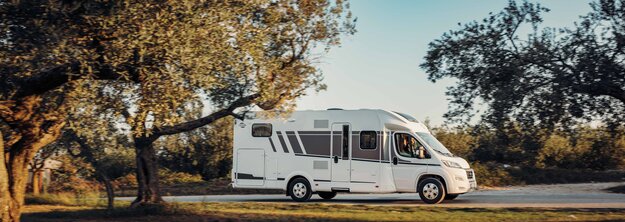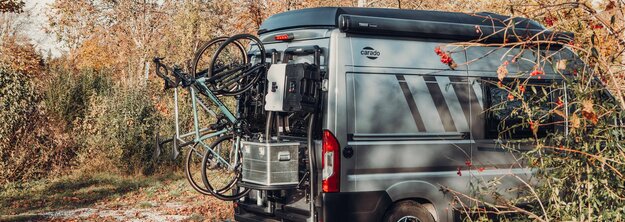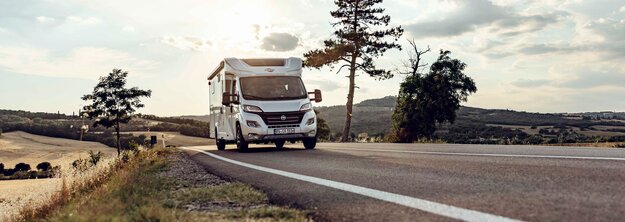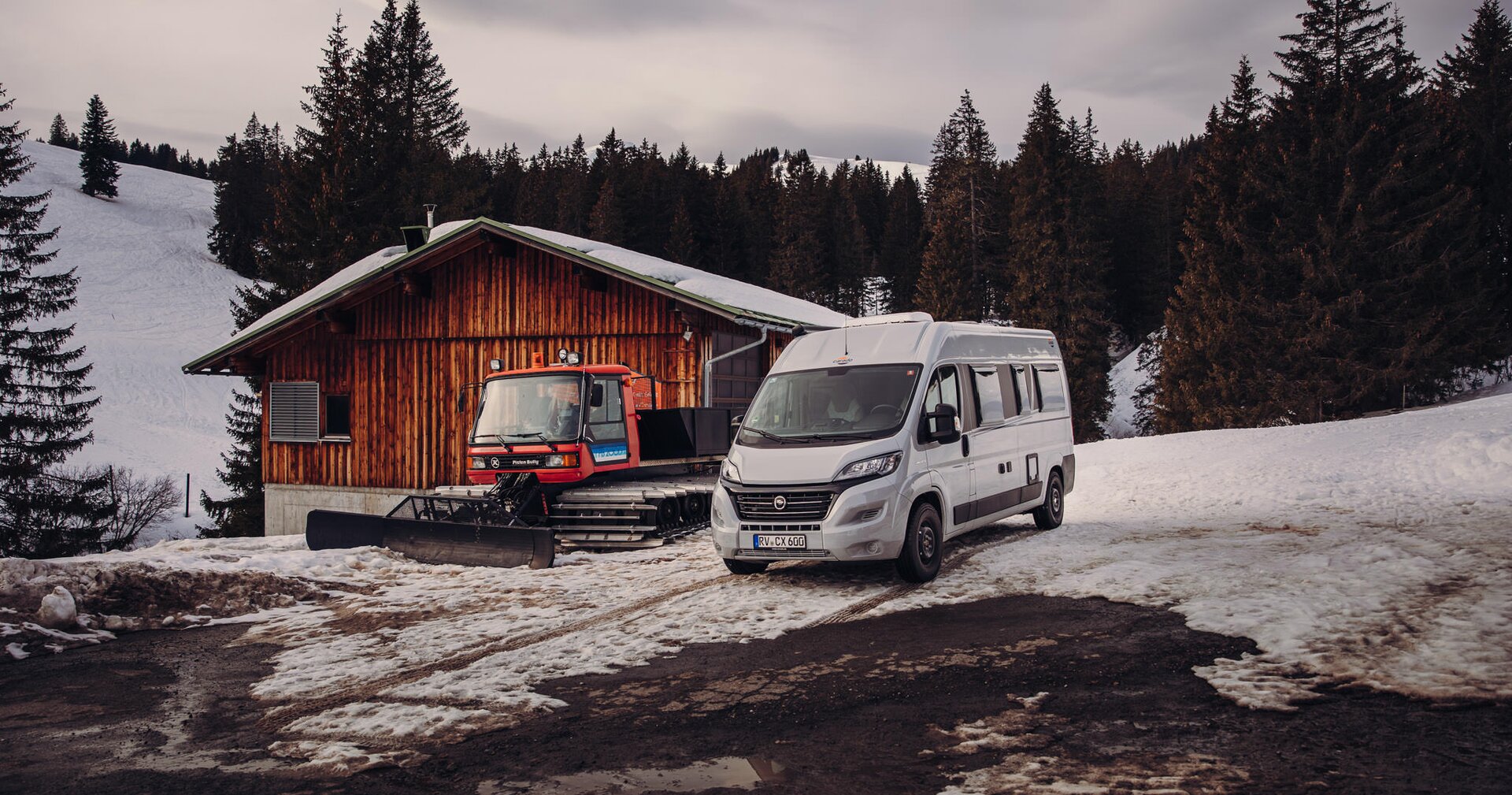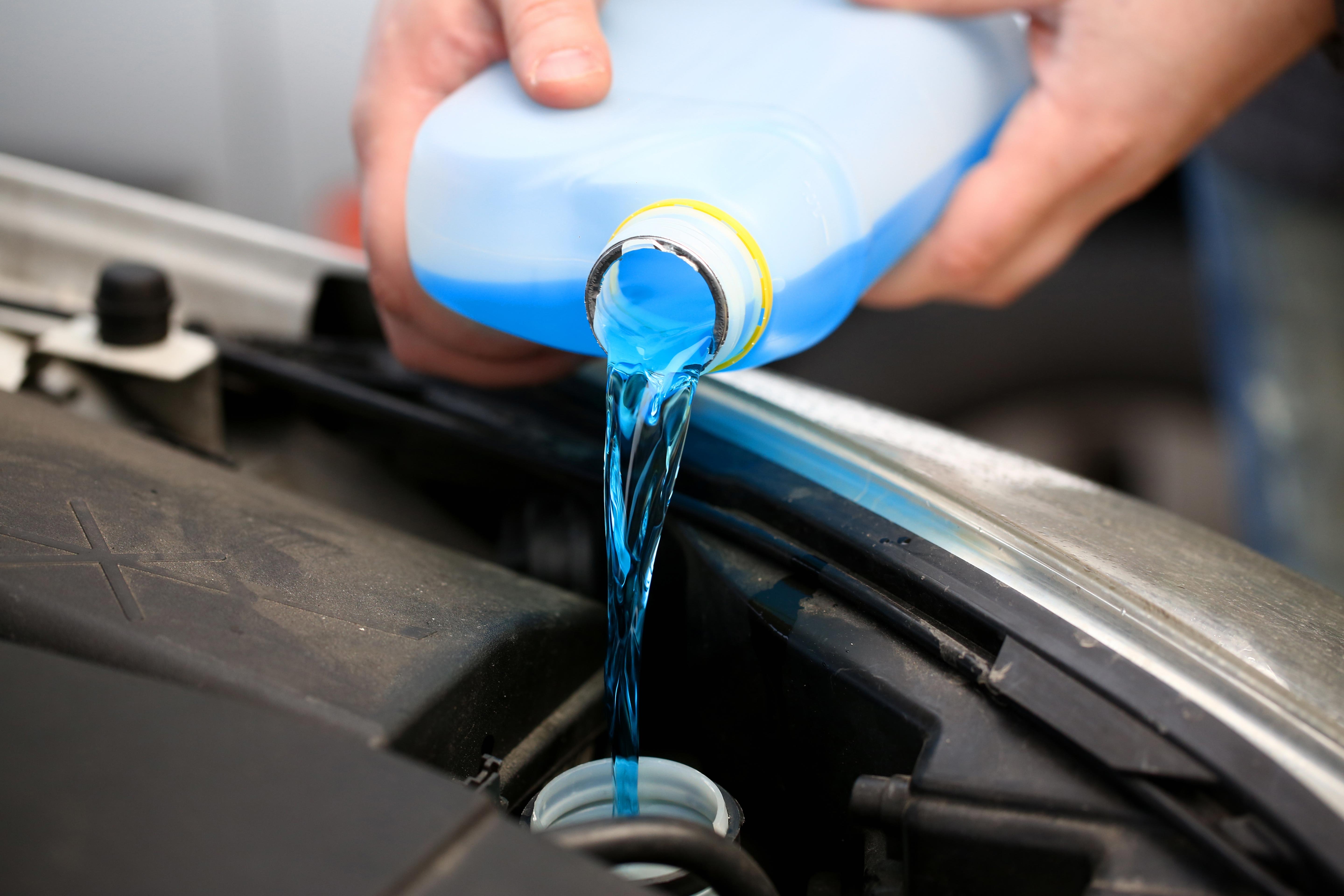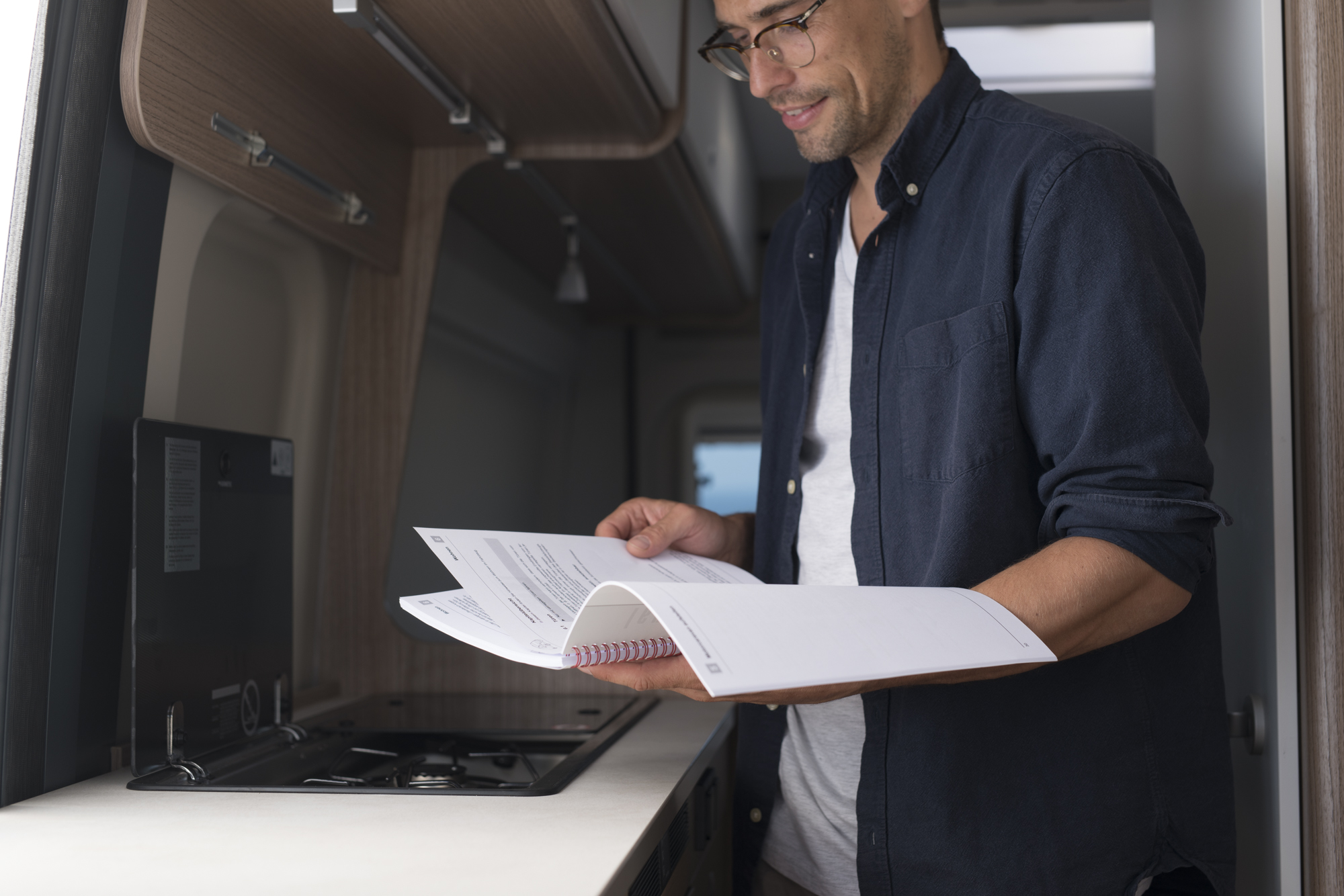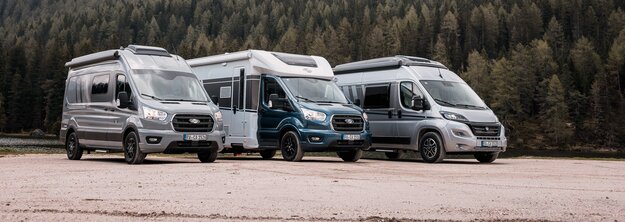
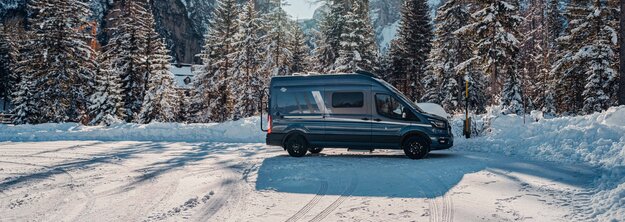
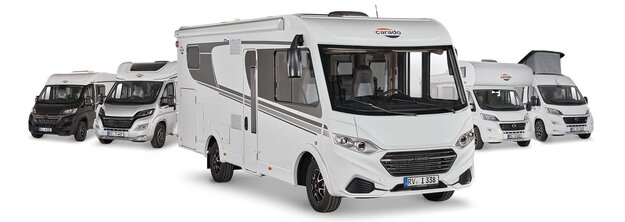
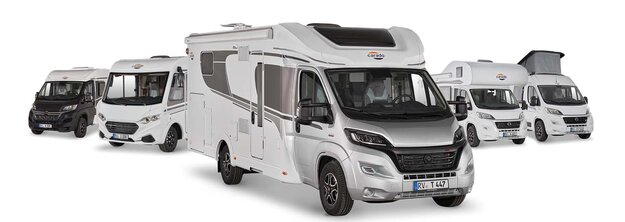
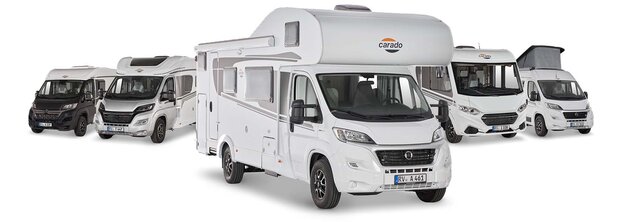

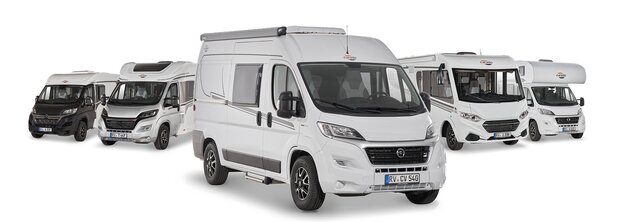
- AT | CV540 | Autumn trip
- AT | T338 | Wine trip
- AT | T457 | Summer Trip
- CH | CV540 | Travel with friends
- ES | T448 | Family trip
- FR | T447 | Round trip
- FR | I447 | Korsika Road-Trip
- GB | V339 | Mountain biking
- GB | T459 | Scotland
- GR | T459 | Ferry trip
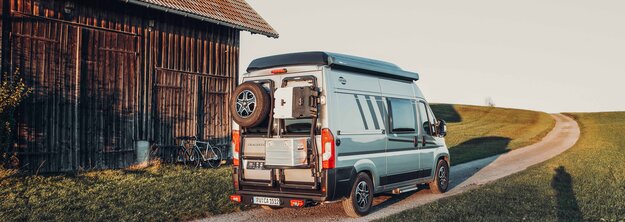
The days are getting shorter, and the leaves are turning autumnal shades of yellow. Unfortunately there are no more holidays for the rest of the year. It’s about time you started preparing your motorhome for the cold winter months, putting it into a well-earned hibernation. We’ve put together some tips so you can ensure your Carado safely survives winter unscathed.
If you don’t plan on using your motorhome during winter, you could always register it as off the road until your next trip. Just check when the next MOT is due before you do as it’ll be awkward to have the MOT and off-road period at the same time. You should also be aware that you are not allowed to leave untaxed vehicles parked on a public road. That means you’ll need to keep your motorhome on private land.
1. ALL AROUND CHECK
Check your Carado for any small defects and fix them. For example, you can use hard wax to protect any small-scale damage to the paintwork.
2. FLUIDS
You need to clean out the fresh water and waste water tanks. This can be done fairly easily using the drain valves on the tanks. You should ideally empty any water left in the tap and siphon. We recommend putting an inflated balloon over the tap so the residual water can be safely pumped out. You should also empty the toilet cistern and drain any water left in the boiler. Water left in the system can cause damage as water expands when frozen. The risk is particularly acute if you’re leaving your motorhome outside during winter.
3. FROST PROTECTION
Make sure you put enough anti-freeze in the coolant and screen wash so that the water doesn’t freeze and cause damage.
4. SEALS
First clean all the rubber seals on doors and windows, then grease them with Vaseline or a special grease applicator. Greasing helps prevent the rubber from becoming porous when it’s icy.
5. INSIDE DAMP
Temperatures inside the motorhome can fluctuate constantly, especially if you leave your Carado outside in winter. Condensation can build up as the air warms and cools, leading to mould in the worst case scenario. Just buy some silica gel packets from the DIY store to act as mini dehumidifiers. They absorb humidity from the air without needing to be plugged in.
6. PARKING SPACE
The ideal place to park your motorhome is under shelter with good air flow, and better yet, a dry indoor space with protection from frost. Avoid covering your motorhome with tarpaulin to make sure there is good air flow and prevent mould from forming.
7. PARKING
If you have to park your Carado outside over winter, try to leave it somewhere sloped. That might sound odd, but it has the benefit of ensuring rain water runs off the roof, preventing it from freezing. Frozen water around the skylight can damage the seal.
8. TYRES
Inflate your tyres with the E-Pressure device from MyCarado Systems and take the motorhome out for a drive from time to time. This stops the tyres from having an uneven load and prevents flat-spotting. If you have support legs for the motorhome, extend them for extra support.
9. FOOD
Remove all foodstuffs from your motorhome, even if they’re unopened and still in date. Mice will still be attracted to the food, and they will cause considerable damage to the interiors.
10. FRIDGE
Leave the doors on the fridge and freezer compartment ajar slightly so that air can circulate and mould doesn’t form.
11. FABRICS
Vacuum the upholstery, mattresses and rugs and leave them in a position where they can get a good airing out on both sides. Better still, you could take them out of the motorhome and store them somewhere dry. What about in the basement or loft (if there’s space)?
12. BATTERY
The best thing to do would be to simply disconnect the battery. However, if you still want to use your motorhome over winter, you could just encase the battery in a thermal bag. But of course, don’t forget to take it out before setting off! You can also remove the battery and store it somewhere warmer to protect it from the cold.
13. TECHNICAL EQUIPMENT
Anything to do with water should always be cleaned and disinfected. Any water still in the motorhome’s systems should be drained. If the 12 V power supply is disconnected, you can leave the taps half open, and you should leave waste water outlets open. However, you should close gas shut-off valves and gas cylinders. The last thing to do is make sure the fuel tank is full.
All done? Great, now you’re prepared for winter! And not only that, you’re prepared for spring and the new camping season.
Here you can easily download our checklist, print it out and tick it off.
Storelocator
Enter your Postcode now and get in soon

